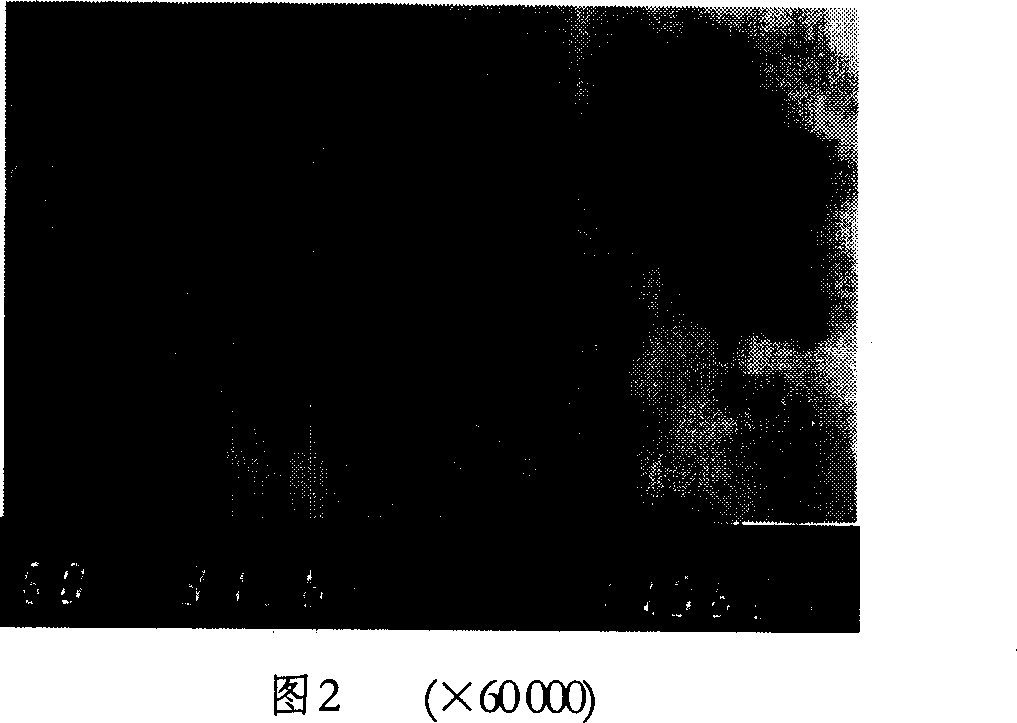Avian influenza virus latex agglutination assay kit and its use
A bird flu virus and detection reagent technology, applied in the field of poultry immunology, can solve problems such as difficulty in binding to latex surface, short shelf life of latex reagents, and difficulty in being suitable for product development, etc., to achieve a wide range of detection samples, short detection time, and easy operation Effect
- Summary
- Abstract
- Description
- Claims
- Application Information
AI Technical Summary
Problems solved by technology
Method used
Image
Examples
Embodiment 1
[0035] Isolation and identification of embodiment 1 bird flu strain
[0036] The number used in the present invention is the QLG-001 avian influenza virus strain, which was isolated from ducks sent for inspection in a certain place in Hubei Province on April 5, 2003. It was identified as the H9N2 subtype by the China Influenza Center, and was observed by electron microscopy and serology. The results of the test, pathogenicity and animal regression test confirmed that the virus isolate was a typical type A influenza virus. EID 50 And pathogenicity tests (IVPI and ICPI) show that the virus is a low pathogenicity strain (LPAIV). The avian influenza virus strain QLG-001 was deposited in CCTCC on September 2, 2005, and the preservation number is CCTCC-V200512. The preservation method of the virus strain is to freeze-dry and preserve it under the condition of -80°C.
[0037] The specific separation and identification steps are as follows:
[0038] (1) Incidence and necropsy lesi...
Embodiment 2
[0086] Preparation and inspection of rabbit anti-avian influenza virus nucleoprotein immune serum of embodiment 2
[0087] 1 Preparation of immune antigen
[0088] (1) Proliferation of virus
[0089] Get QLG-1 virus strain, make 10 with sterilized normal saline -4 Dilute and inoculate specific pathogenic microorganism-free (SPF) chicken embryos into the allantoic cavity, 0.2 mL per embryo, seal the pinhole after inoculation, and continue to incubate at 37°C. Eggs were illuminated once every 12 hours, and the chicken embryos that died 24 hours ago were discarded, and the chicken embryos that died 24 hours to 72 hours were cooled at 4°C overnight, and the allantoic fluid of the chicken embryos was harvested, and the HA titer ≥ 9log2 was qualified. .
[0090] (2) Inactivation of virus
[0091] After freezing and thawing the qualified chicken embryo allantoic fluid for 3 times, add formaldehyde with a final concentration of 0.2%, mix well and replace it into another sterile co...
Embodiment 3
[0102] Embodiment 3 Establishment of avian influenza virus latex agglutination detection method
[0103] Take 125 μL of 10% carboxylated latex into EP tube, wash 3 times with pH9.6, 0.1M carbonic acid buffer, then select 3 times with pH4.5, 0.01M phosphate buffer, then add 0.5% water-soluble carbodioxide The amine was reacted in phosphate buffer at room temperature for 4 hours, and then washed 3 times with pH 8.5, 0.01M boric acid buffer, the latex was suspended in 1ml boric acid buffer, and an appropriate amount of IgG was added to sensitize for a certain period of time, and then a terminator was added to terminate the reaction. .
[0104] 1 Determination of the amount of optimally coupled IgG
[0105] Add different amounts of IgG to 1 mL of carboxylated latex suspended in boric acid buffer, increasing from 200 μg, 400 μg, and 600 μg to 1800 μg. Protein amount, calculate the coupling efficiency of IgG, the formula is as follows:
[0106] Coupling efficiency of IgG (%)=(Ini...
PUM
| Property | Measurement | Unit |
|---|---|---|
| diameter | aaaaa | aaaaa |
Abstract
Description
Claims
Application Information
 Login to View More
Login to View More - R&D
- Intellectual Property
- Life Sciences
- Materials
- Tech Scout
- Unparalleled Data Quality
- Higher Quality Content
- 60% Fewer Hallucinations
Browse by: Latest US Patents, China's latest patents, Technical Efficacy Thesaurus, Application Domain, Technology Topic, Popular Technical Reports.
© 2025 PatSnap. All rights reserved.Legal|Privacy policy|Modern Slavery Act Transparency Statement|Sitemap|About US| Contact US: help@patsnap.com


